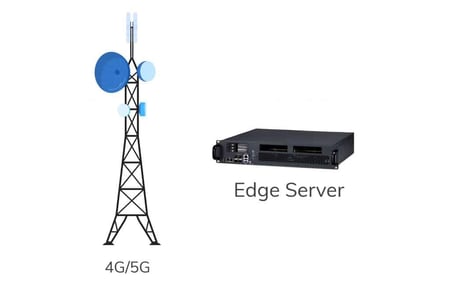Securing the Edge
Edge Computing - Importance and Functions
Of all computing paradigms, edge computing is the fastest growing. According to a Gartner report, "around 10% of enterprise-generated data is created and processed outside a traditional centralized data center or cloud. By 2025, Gartner predicts this figure will reach 75%”. As a result, edge computing is driving a technological revolution in every field of our lives, including health care, logistics, military and security, communications, critical infrastructure, all the way down to the ‘connected’ homes of the future.
Forces such as the internet of things and the data revolution in previously hard-to-reach locations, edge computing brings enormous benefits but with them an exponential increase in associated protection risks. In this article, we examine these benefits and identify what risks arise and how to resolve them.
Edge computing seeks to capture, store, process, and analyze data physically close to the point of data generation rather than in a centralized remote data process location. It differs from the traditional understanding of cloud computing. Its purpose is to reduce latency issues for processes needing ‘real-time’ computing and offering the same in locations where neither broadband nor fast, reliable mobile data are available.
Edge and cloud can work happily in tandem. For example, data from the edge is transmitted to a machine learning application on the cloud and then feeds back the results to the edge. This doesn’t affect the latency needed for the real-time process.
A Market in Growth
The growth in edge computing is driven by the multiplication of environments that offer greater suitability to an organization. This can be either due to the specific requirements of an organization or the absence of other options. Let’s look at some of these in the real world.
- Private clouds. As businesses generate evermore data, sharing a public cloud can become increasingly inefficient. As a result, many companies with sufficient resources are moving to create their own, where practical on their own premises. This is a costly exercise both in hardware and software but especially in human resources costs of dedicated IT specialists. The benefits are systems designed with maximum functionality for end-users and an end to reliance on external suppliers. Though monetary compensation may be forthcoming if a cloud provider suffers a significant incident, your customers won’t associate the issue with a provider, and the reputational damage can be severe.
- Critical infrastructure. Edge keeps the physical data infrastructure within a manageable physical space offering greater protection to critical infrastructures such as water treatment, energy generation, transmission, 5G stations and masts or satellite ground stations, and many others. Much of this infrastructure is in rural areas. Up to 97% of the landmass in the US is considered rural and populated by 60 million people. The Rural Cloud Initiative is one of several large-scale projects to bring the benefits of the edge computing revolution to those who have so far missed out.
- The Internet of Things (IoT) doesn’t describe only your fridge and cooker. Increasingly, our homes will be managed by device, either on location or remotely. And more safety-critical appliances such as drones, autonomous vehicles, medical robots, and the like will need computing capabilities built into them from the initial design concept.
Risks and Risk Management at the Edge
Edge computing empowers all these things, allowing for data democratization and distributed computing to the many, but it has a flaw with potentially profound consequences: security. The prevailing protection paradigms are not appropriate for this new world in which distributed computers can neither be managed nor monitored.
Edge computing brings with it multiple risks, including:
- Insecure environments for mobile edge Computing on 5G networks
- Software that controls the Virtual Radio Access Network (vRAN)
- Open RAN (ORAN)
- 3rd-party value-added applications
- Applications run on Commercial-off-the-shelf (COTS) hardware

Enjoy Edge Computing Benefits and Avoid Risks with HUB Security
HUB Security has introduced a protected computing platform capable of running a variety of distributed computing capabilities that allow for edge computing systems to offer military-grade cybersecurity to many applications. These range from AI programs through applications requiring high computing capability to those dedicated to mission-critical and sensitive data. In this way, organizations can benefit locally from paradigms already in use in more traditional environments. The Rural Cloud Initiative, and many others, have chosen HUB to partner with them in this endeavor.
HUB’s vaults provide a complete and resource-rich computing environment within a hardware protection shell that is protected and immune to attack. The environment neutralizes attacks by tight access control and a high level of compartmentalization between the various uses in the same core. It does this by various means, including a tamper-proof box customized for an organization’s requirements and physical handheld devices that grant privileges and access determined by system administrators and Company policies.
Cloud computing still plays a critical role for the organization, especially in AI and machine learning applications that may prove too costly or time-consuming to run locally. Hubs solutions offer protection in the transmission of data between a center and the edge. We employ hardware security modules that safely store secure keys, payments, and other business applications in an isolated environment. In addition, a dedicated and customized HSM is built for sensitive and complex approval flows, such as secure access to critical infrastructure, payments, transfer of assets, code signing, and identity management.
All revolutions fail without sufficient security to protect their gains. HUB is dedicated to the success of the Edge revolution.

